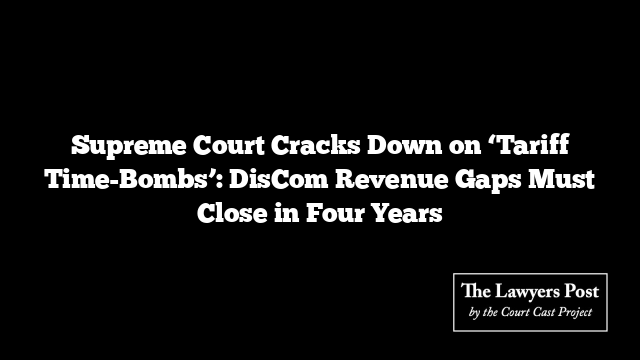In a ruling that jolts the country’s power regulators out of their comfort zone, the Supreme Court has ordered Electricity Regulatory Commissions (ERCs) to stop letting revenue shortfalls fester for decades under the guise of “regulatory assets.” Starting April 1, 2024, these deferred costs must be cleared within four years—no more endless postponements.
The bench, led by Justices P.S. Narasimha and Sandeep Mehta, drew a hard line: future regulatory assets should vanish within three years, while old ones—some dating back to 2004—get a four-year deadline. This comes after Delhi’s power distribution companies (DisComs) accused the Delhi Electricity Regulatory Commission of parking massive unpaid sums for over two decades, resulting in a crushing ₹27,200 crore backlog that strangled operations and triggered a cash crunch.
For the uninitiated, a “regulatory asset” is essentially a deferred IOU—costs DisComs have already borne but aren’t allowed to recover from consumers immediately, usually to soften tariff shocks. The Court noted that while the Electricity Act doesn’t expressly mention such assets, ERCs have been using them as a policy tool. But what began as a short-term cushion has, in some states, ballooned into an unchecked financial snowball.
The Court’s stance was blunt: ERCs have two jobs—help utilities recover dues efficiently and ensure that this recovery respects the principles of tariff determination. Letting the backlog swell “beyond proportion” is a governance failure that hurts both DisComs and consumers, the latter eventually footing the bloated bill.
Key directives laid down by the Court include:
- Tariffs must mirror real costs.
- Revenue gaps should be rare and justified.
- Regulatory assets should stay within a reasonable cap—around 3% of the Annual Revenue Requirement.
- Future assets: liquidate in 3 years. Existing assets: clear in 4 years from April 1, 2024.
- ERCs must produce detailed liquidation roadmaps, including carrying costs, and conduct strict audits of delay causes.
- The Appellate Tribunal for Electricity (APTEL) must monitor compliance and hold ERCs accountable.
The judgment warns that creating regulatory assets should be an exception—reserved for crises like natural disasters—not a routine budgeting shortcut. APTEL has been tasked with registering a suo motu petition to keep watch until the deadlines are met, with powers to summon explanations and issue binding orders to lagging commissions.
In short, the Supreme Court has told the power sector: no more hiding unpaid bills in the fine print—because delaying today’s tariffs only means tomorrow’s consumers pay a heavier price.





